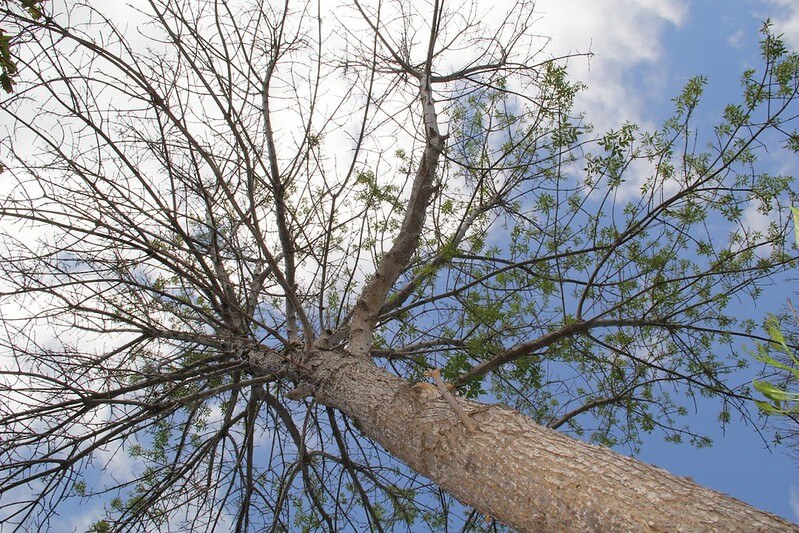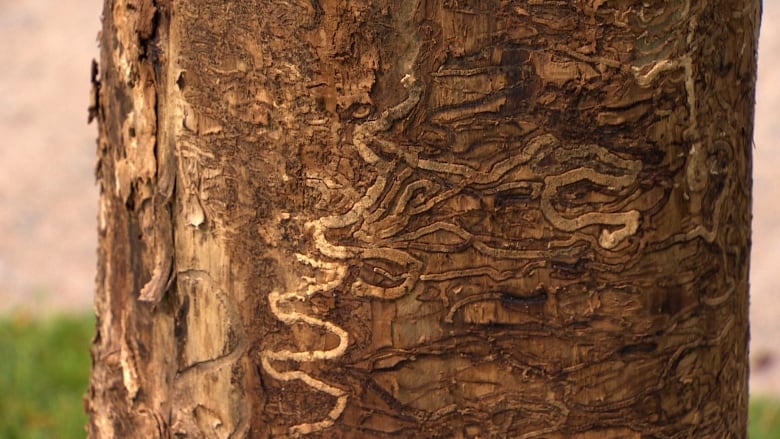A destructive pest known as the emerald ash borer, which has wreaked havoc on ash trees across the United States, has now spread to Yamhill, Clackamas, and Marion counties in Oregon. This summer, increased signs of infestation, including damage from woodpeckers, have been noted, signaling a potential threat to the state’s ash tree population.
How EAB Got To Oregon
This invasive species, originally from eastern Asia and first identified in Oregon in Forest Grove in June 2022, is notorious for its devastating impact on ash trees, having destroyed 99% of them in Michigan and inflicted extensive damage throughout the East Coast.
The adult beetle, characterized by its small size and metallic green color, lays eggs in ash trees. The larvae then feed on the inner bark, causing severe damage that leads to the death of the tree.
Efforts are underway to curb the spread and damage of this pest in Oregon’s ash forests, with extensive testing highlighted on various websites focusing on preserving native ash tree species. Federal and state officials are actively engaged in these efforts, aiming to protect these trees from becoming another statistic in the emerald ash borer’s path of destruction.
The emerald ash borer is a formidable threat

“No state has been able to eradicate EAB, so since its first detection in Forest Grove, we have expected it to eventually show up in new parts of Oregon,” said Cody Holthouse, the compliance and regulatory manager at the Oregon Department of Forestry.
“That’s why folks from collaborating agencies have been methodically surveying for the insect, setting out traps beyond the known infestation area, and training people to know the signs and symptoms of infestation, including ash tree damage. Additional resources and information can be found on our website to help identify EAB and protect native ash trees.”
That definitely helps us learn from the website where the insect is spreading to the ash tree.
Efforts to Prepare for EAB
Authorities are finalizing plans for a quarantine, details of which will be available on their website. This measure aims to control the spread of materials from ash, olive, and white fringe trees, similar to actions taken in Washington County.
The quarantine will limit the transport of various tree-related items. This includes, but is not limited to, items such as logs, green lumber, nursery stock, scion wood, bud wood, chips, mulch, stumps, roots, branches, and hardwood species firewood.
“We want to protect the rest of Oregon for as long as possible to give communities more time to prepare,” said Holthouse.
To slow further spread, Holthouse urges Oregonians to buy firewood near where they intend to burn it and avoid taking firewood, especially from ash trees, more than 10 miles from where it was cut.
Yamhill County
One adult beetle was found in a trap in the Gaston area, near an ash tree. A federal lab officially confirmed the find as an emerald ash borer on Aug. 12. The trap was located just inside Yamhill County about 7 miles from Forest Grove, where the emerald ash borer was first detected in Oregon in late June 2022.
Clackamas County
In mid-July, shortly after undergoing training by the Oregon Department of Agriculture on spotting emerald ash borer infestations, Jake Downer, who works for Portland General Electric, noticed signs of canopy decline in ash trees located in Elliot Prairie, east of Woodburn. This observation was made within Clackamas County, close to its boundary with Marion County. Downer’s training played a key role in identifying the issue early on.
Wyatt Williams, ODF’s invasive species specialist, visited the site in early August. He saw evidence that emerald ash borer larvae had been feeding on Oregon ash trees, with several trees showing a marked decline. Samples have been sent to the federal lab in the eastern U.S. for official confirmation.
Williams examined ash trees situated in a dense, blackberry-filled area along Butte Creek, which is located between Mt. Angel to the north and Hubbard to the south. This creek marks the boundary between Clackamas and Marion counties. He observed that trees on both sides of the creek were heavily affected by emerald ash borer infestations. This was evident from the weakening tree canopies and the distinctive D-shaped holes in the tree trunks, indicating where adult borers had emerged.
“The extent of dieback suggests that EAB may have been present for a number of years at the site but went unnoticed given the difficult access and dense vegetation, which includes a mix of oak and conifers,” said Williams.
Marion County
On July 30, Williams discovered several emerald ash borers in traps located near the Pudding River, just south of Woodburn and to the west of Mt. Angel. He managed to collect five adult borers from one of the traps, suggesting there’s a sizable population in that area. The USDA APHIS’s laboratory has also verified these samples as emerald ash borer.
“Given the trees did not show any signs of damage, we would not have known about this site for some time if not for the traps,” said Williams.
Holthouse said ODA will be conducting intensive searches in the coming days for emerald ash borer in areas surrounding the new sites in Marion and Clackamas counties to find out whether it shows up farther away.
How do emerald ash borers impact trees?
The emerald ash borers’ larvae burrow into the bark of ash trees, causing canopy dieback and, ultimately, tree death. The half inch beetle is often challenging to detect, especially in newly infested trees.
“Signs of infestation include thinning and yellowing leaves, bark splitting, D-shaped holes in the tree bark, and basal shoots,” a news release said.
Suspected emerald ash borer infestations can be reported over the phone at 1-866-INVADER or online at oregoninvasiveshotline.org/reports/create
